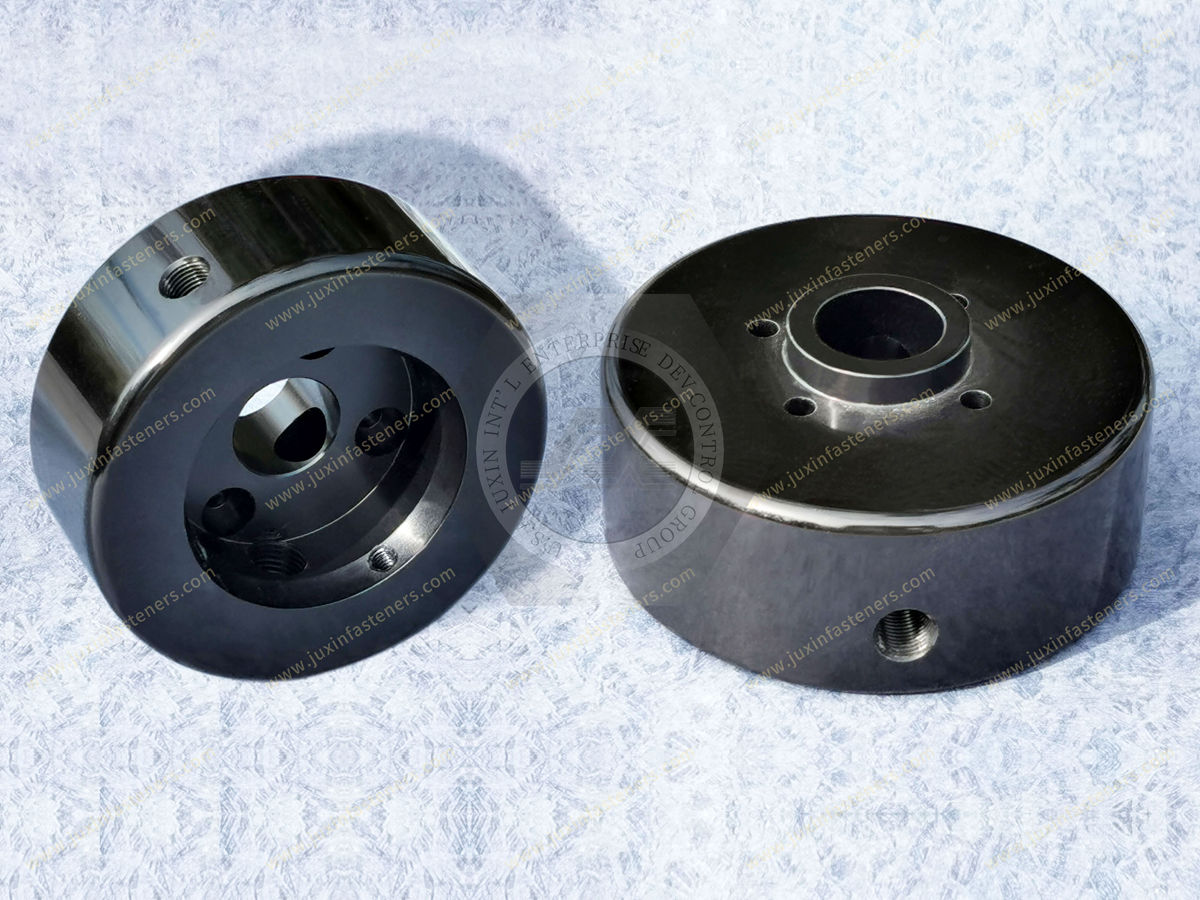Call Us
+86 136 6007 9809
Call Us
+86 136 6007 9809
Material: 6061-T6 aluminum
Color: black
Finish: A21 clear coat anodized
Product Specification
Aluminum hard oxidation; aluminum hard oxidation dyeing black; aluminum anodizing dyeing treatment; aluminum anodizing treatment; aluminum surface hardening, aluminum surface hardening treatment; aluminum alloy surface hardening treatment; aluminum surface hardening black
Hard oxidation treatment various characteristics and technical description
1. Characteristics: Hard oxidation is an electrochemical treatment to form an extremely hard, high temperature resistant, wear-resistant, highly resistive, corrosion-resistant hard oxide film on pure aluminum or aluminum alloy materials. This extremely high surface hardness, together with the lightness, easy machining, and low cost of the aluminum alloy itself, is widely used in various industrial applications and is an indispensable part of the precision industry.
2, Hardness: refers to the hardness of the film layer, and the thickness of the film layer (Thickness) refers to Buildup and Penetration in two parts, T = 1/2 Buildup + 1/2 Penetration. HV700) or more.
3. Wear resistance: With the load of TaberAbraserCS-171000g, the wear resistance of aluminum alloy hardening treatment is much better than hard chrome plating and other hardened steel.
4. Precise size: The thickness of the film layer is generally 505um, and the size of one side of the component is increased by about 25um. For finer tolerances and special thickness requirements, special instructions are required on the drawing.
5. Corrosion resistance: by sealing holes, salt spray test (ASTM117 specifications) for more than 5000 hours without corrosion phenomenon
6. alloy material suitability: applicable to all aluminum alloys, including 1000 pure aluminum systems (1050, 1100), 2000 aluminum copper systems (2014), 3000 aluminum manganese systems, and 5000 aluminum-magnesium systems. 6000 aluminum magnesium system (6061, 6063) 7000 aluminum zinc system (7050), and casting aluminum alloy 514.2, A5142 5182ADC5ADC6, etc.
7. Voltage resistance (Breakdown Voltage): up to 1500VDC or more.
8. High resistance: 4X1015 ohm cm2/cm at 20 degrees C can be used as a good insulator.
9. Heat resistance: film melting point of 2050 degrees C, a short period to protect the aluminum in the high temperature from damage.
10. Low friction coefficient: After polishing the surface, the friction control coefficient can be as low as 0.095.
11. Bonding of oxide film: The form of the hard oxide film is that half of the film is infiltrated on the aluminum surface, and the bonding with the aluminum base metal is so strong that even if the film is bent with the base until it breaks, the film remains well bonded with the base metal.
12. Porous structure of oxide film: oxide film has a porous honeycomb structure, which can make the film layer show good adsorption ability to various organic substances, resin, inorganic substances, dyes, paints, etc. It can be used as the base layer of the coating layer, and the oxide film can be dyed into various colors (hard oxide film, only black) to improve the decorative effect of the metal.
1. Aluminum alloy parts stamping processing
Stamping is the workpiece-forming processing method of applying an external force to plates, strips, tubes, and profiles through presses and dies to produce plastic deformation or separation according to the shape and size of the required workpiece.
2. Aluminum alloy parts mechanical processing
Mainly with turning, milling, planing, drilling, grinding, and other general-purpose machine tools to process mold parts, assembled into a variety of molds. Aluminum alloy parts machining can also be called CNC precision machining or automatic lathe machining, CNC lathe machining, etc.
Aluminum alloy parts machining features: Aluminum alloy machining hardness is low: compared with titanium alloy and hardened steel, aluminum alloy has a lower hardness, of course, heat treatment or die-casting aluminum alloy also has a higher hardness. The general HRC hardness of aluminum plate is generally below HRC40 degrees. Therefore, in the case of machining aluminum alloys, the load on the tool is small. In addition, aluminum alloy has excellent thermal conductivity, so the cutting temperature of aluminum alloy milling is low, which can improve the milling speed.
3. Low plasticity of machining aluminum alloy: The plasticity of aluminum alloy is low, and the melting point is also low. When machining aluminum alloy, the bonding edge problem is very deep, the chip removal performance is poor, and the surface roughness is also high. When machining aluminum alloy, it is mainly the knife and roughness effect that is not good. If the two problems of fixed knife edge and quality of processing surface are solved, the problems of aluminum alloy processing can be solved.
4. Aluminum alloy machining tool is easy to wear: After using unsuitable tool material, in the case of machining aluminum alloy, there are more cases that the tool wears faster due to the problems of bar edge and chip discharge.
Product Packaging
Packing: Inner is Poly foam, out is carton. Then pallet. Carton size: 29*19*19.5CM and 23.5*17.5*8, CM and pallet size is: 215*100*90CM, or as your requirement.
Product Pictures

Packing for CNC aluminum parts:
1. Usual packing: By pearl cotton/bubble bag/plastic wrap + carton box, 0.5-10kg/carton box.
2. Special packing(for large part/large quantity order): By pearl cotton/bubble bag/plastic wrap +carton box+wooden box.
3. As customers' requirement for CNC aluminum parts
Contact Us
Tel.:
+86 020 8621 0320
+86 020 3121 6067
Technical Support:
Navigation
SEND INQUIREY